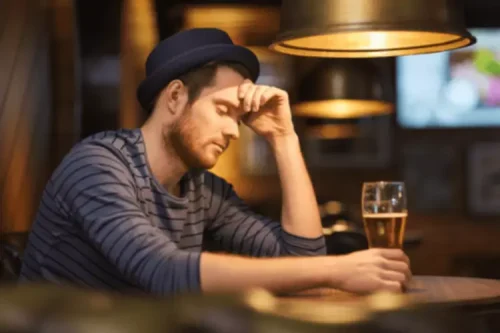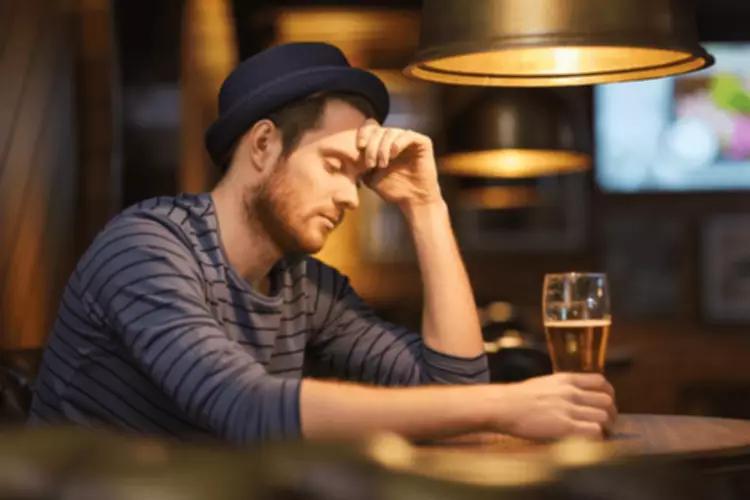Why Alcohol Can Give You Anxiety

Understanding your risk profile for each condition can help interpret ambiguous symptoms. One potential explanation for these findings is that the reasons for using alcohol may differ by gender. For example, women may be more prone than men to self-medicate for mood problems with substances such as alcohol (Brady and Randall 1999).
- Moreover, serotonergic agents have favorable properties, such as being well-tolerated and having virtually no abuse potential.
- Only a qualified healthcare professional can diagnose an alcohol use disorder or an anxiety disorder.
- While alcohol initially acts as a sedative, helping people fall asleep faster, it disrupts the sleep cycle, particularly REM sleep, leading to fragmented and non-restorative sleep.
- Although not as common, alcohol can cause psychosis –– which includes hallucinations and/or delusions.
- Patients typically experience symptom relief within 4 to 6 weeks, with continued improvement over time.
Diagnostic and Treatment Considerations for Comorbid Anxiety and AUDs
Conversely, there is an increased prevalence of alcoholism among patients with panic disorder and their blood relatives. A comparison of symptoms, physiological and neurochemical changes known to occur in both alcohol withdrawal and panic disorder reveals a degree of similarity between the 2 conditions. Based on the data, we propose that the chemical and cognitive changes occurring as the result of repeated alcohol withdrawals may kindle and condition coincidence of panic attacks in susceptible individuals. Implications of our postulates for treatment of alcohol withdrawal and panic disorder in alcoholics and for future studies are discussed. Second, the possibility that a longer term anxiety or depressive disorder exists in an alcoholic must always be considered.
Lifestyle Quizzes
The presence of multiple risk factors makes a cardiac cause more likely when chest pain occurs. However, heart attacks can and do happen in people without obvious risk factors. Unlike the gradual onset often seen with heart attacks, panic attacks typically strike suddenly and reach peak intensity within minutes. Taken together, the epidemiological and clinical literature describing the relationship between anxiety and AUDs shows that this comorbidity is both prevalent and clinically relevant. Therefore, it is important to enhance understanding of this comorbidity.

Anxiety
If you suffer from panic attacks, cut right down on your alcohol consumption, if you drink. If you experience sudden, intense anxiety and fear, it might be the symptoms of a panic attack.13 Other symptoms may include a racing heartbeat, or feeling faint, dizzy, lightheaded, or sick. All our psychiatrists (and all psychiatrists in general) are medical doctors with additional training in mental health. In order to find out which medications might be appropriate, they need to conduct a full evaluation.
- Avoidance behavior can significantly impact a person’s quality of life, leading to social isolation and worsening anxiety.
- If anxiety persists despite these lifestyle changes, seeking medical help is essential.
- Taken together, the findings reviewed here provide some instructive information on gender differences in the comorbidity of anxiety and AUDs.
- In this opponent process model, the term “addiction” refers to the neurobiological and motivational changes that occur as a consequence of chronic substance use.
- If you’re concerned about your panic attacks and feel that you’ve been using alcohol as a way to manage them, it’s important to understand the potential impact of this form of self-medication.
Signs include skin flushes and a feeling of being either wound up or very sleepy. Even one drink can interrupt the natural cycles of sleep, causing a nervous or irritable feeling the next morning. Alcohol is a mild anesthesia and will put you in the mood for sleep — at least initially. Later in the sleep stages, alcohol disrupts REM sleep and paralytic sleep, which https://ecosoberhouse.com/ is when your body rejuvenates itself.

What is postpartum anxiety? How do I get help?
Both conditions substantially increased the prospective relative risk for developing the other. However, treating most alcoholics’ depressive symptoms might not require the use of antidepressant medications. These medications are not needed to Substance abuse help clear an alcohol-induced mood or depressive disorder.

Conditions
- When you suffer from panic attacks and anxiety, it implies that your natural ability to cope with stress is suffering.
- High levels of depression are especially worthy of concern, because the risk of death by suicide among alcoholics, estimated to be 10 percent or higher, may be most acute during these depressed states.
- In contrast, no differences in relapse rates were found among the men with or without social phobia in the study.
Younger individuals, particularly those in their late teens and early twenties, may be more susceptible to alcohol-induced anxiety due to the developing brain’s response to substances. Older adults may experience heightened anxiety after drinking due to age-related changes in metabolism and the body’s ability to process alcohol. As the body ages, it becomes less efficient at breaking down alcohol, leading to prolonged effects and increased anxiety. Individuals with a family history of alcohol use disorder or alcohol and panic attacks anxiety disorders may be genetically predisposed to developing these conditions. Research shows that certain genetic markers increase the likelihood of experiencing anxiety in response to alcohol.

Moreover, the impaired judgment and impulsivity among persons with co-occurring alcohol use problems may increase the risks of taking an overdose of the medications that can result in toxicity and, potentially, suicidality. Finally, TCAs may react with alcohol in the brain to cause respiratory depression (Bakker et al. 2002). These allostatic adaptations in the brain lead to the second stage of addiction—withdrawal/negative affect. In this stage, reward circuits become blunted because of within-system neuroadaptations. The brain’s stress systems, including corticotropin releasing factor and norepinephrine in the central amygdala and bed nucleus of the stria terminalis, become increasingly dysregulated because of between-system compensatory neuroadaptations.
